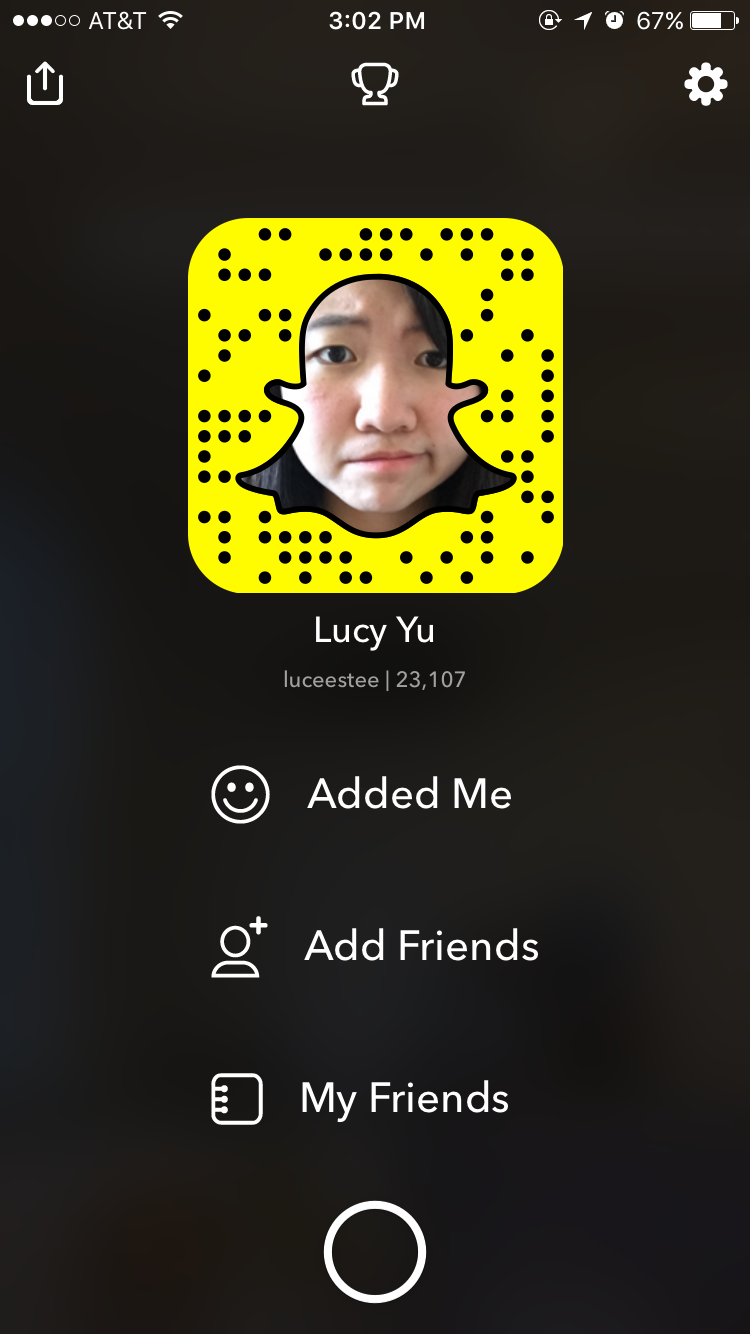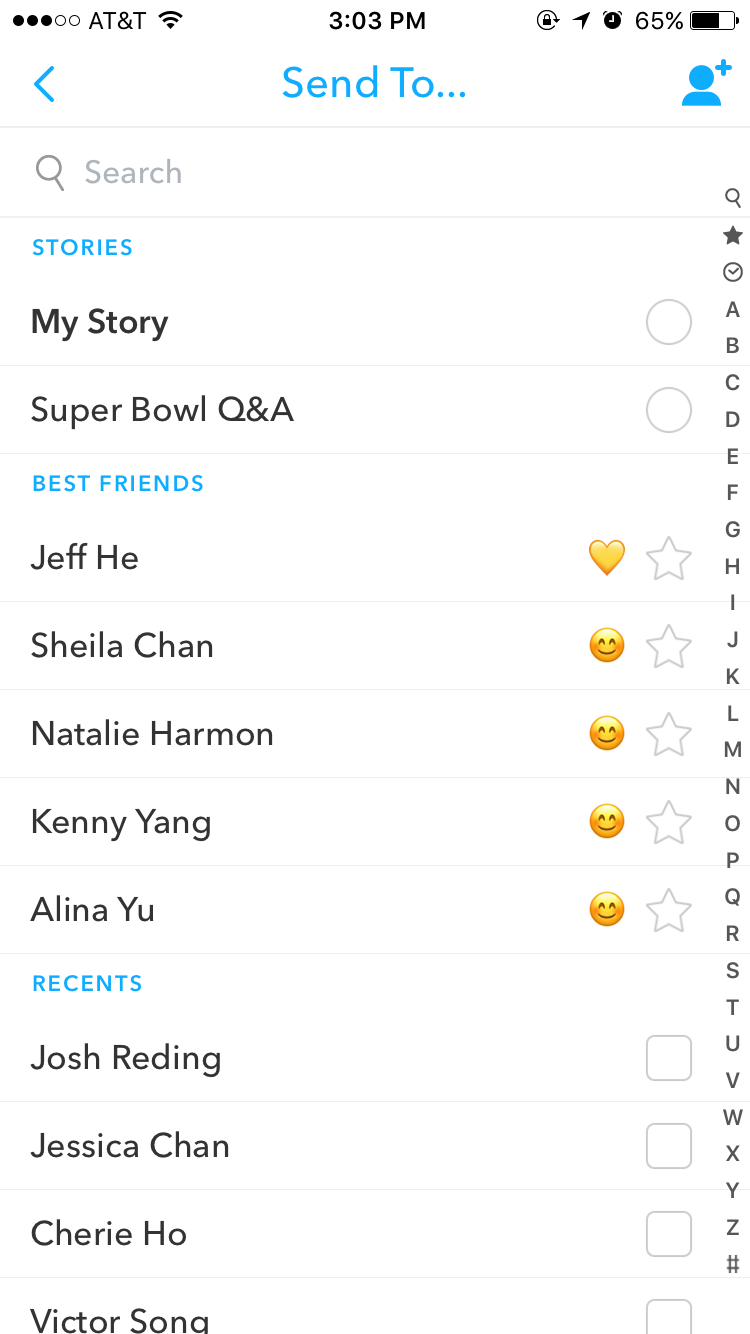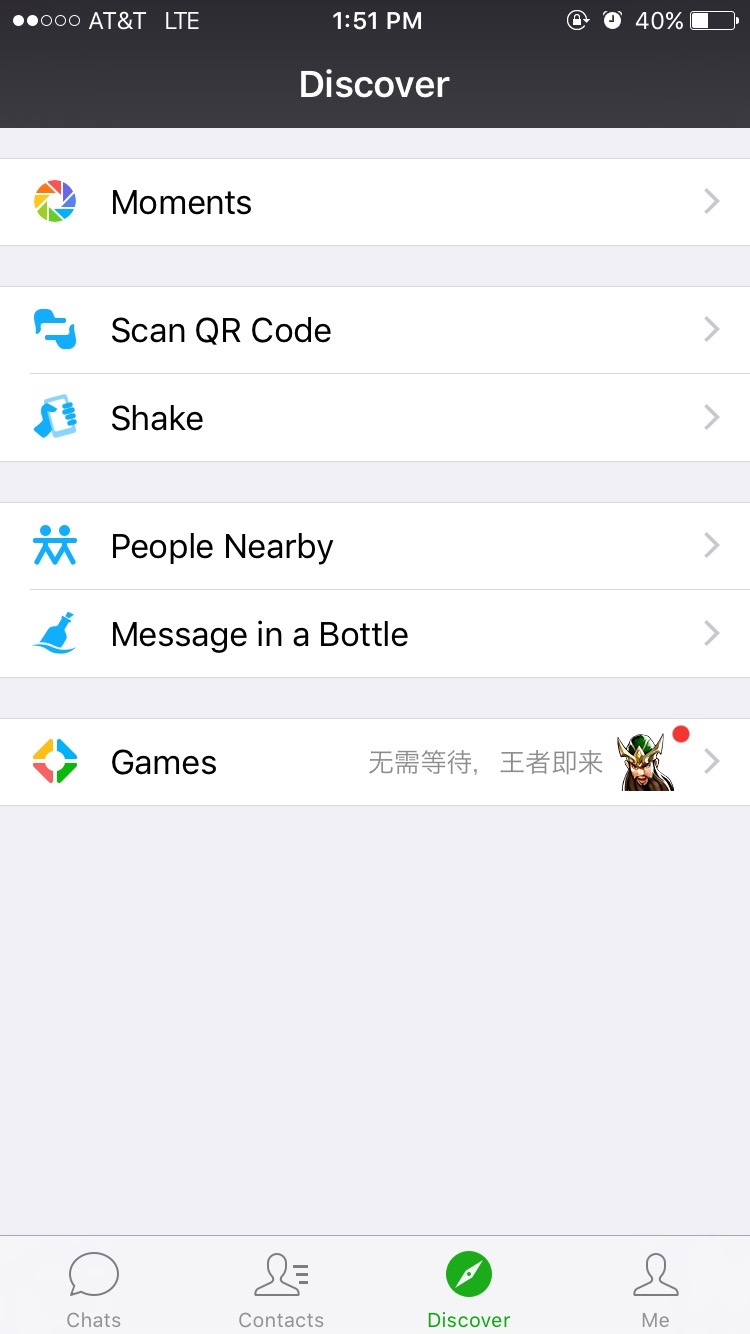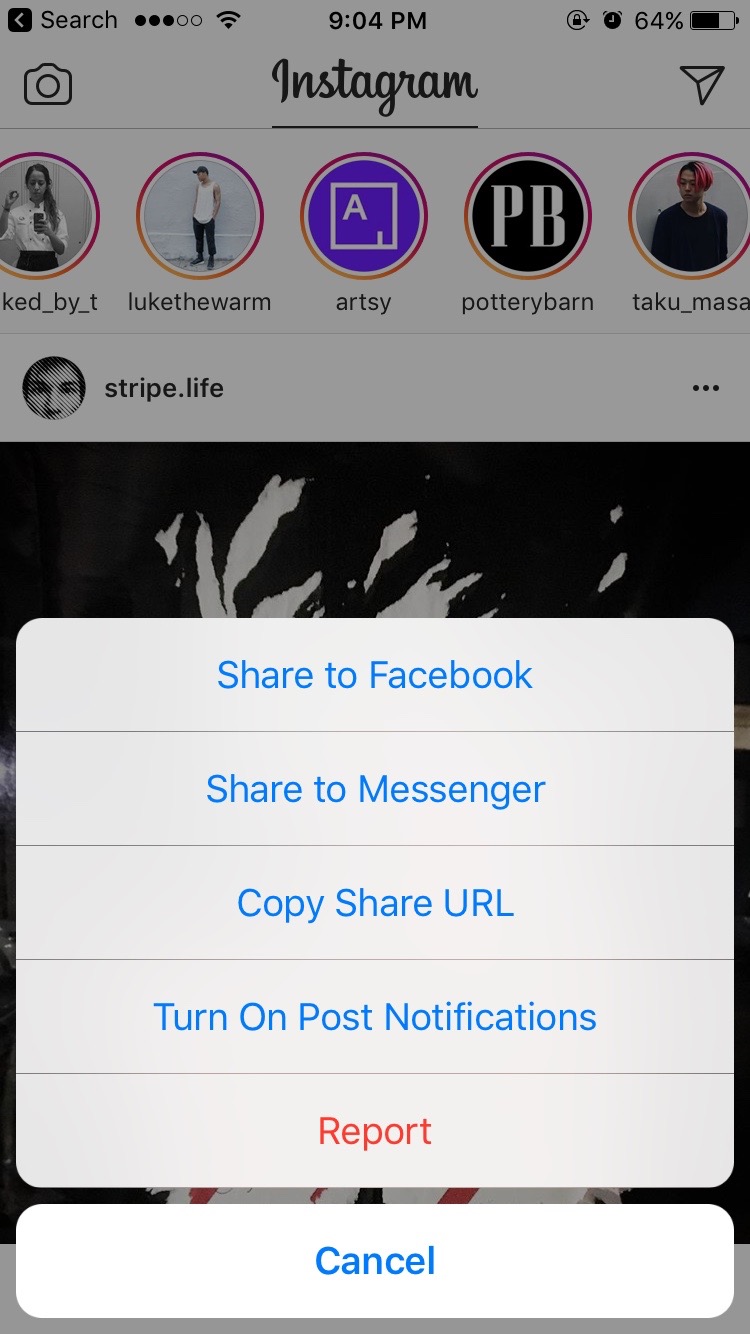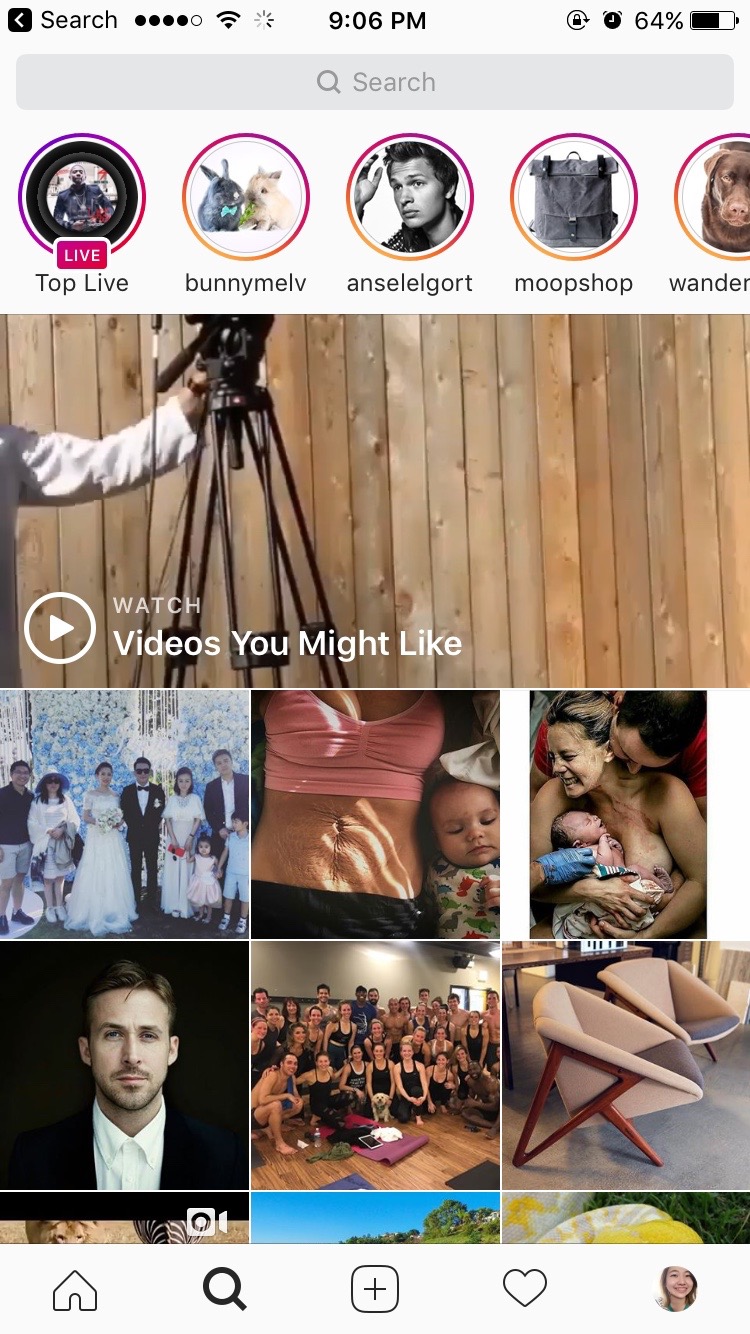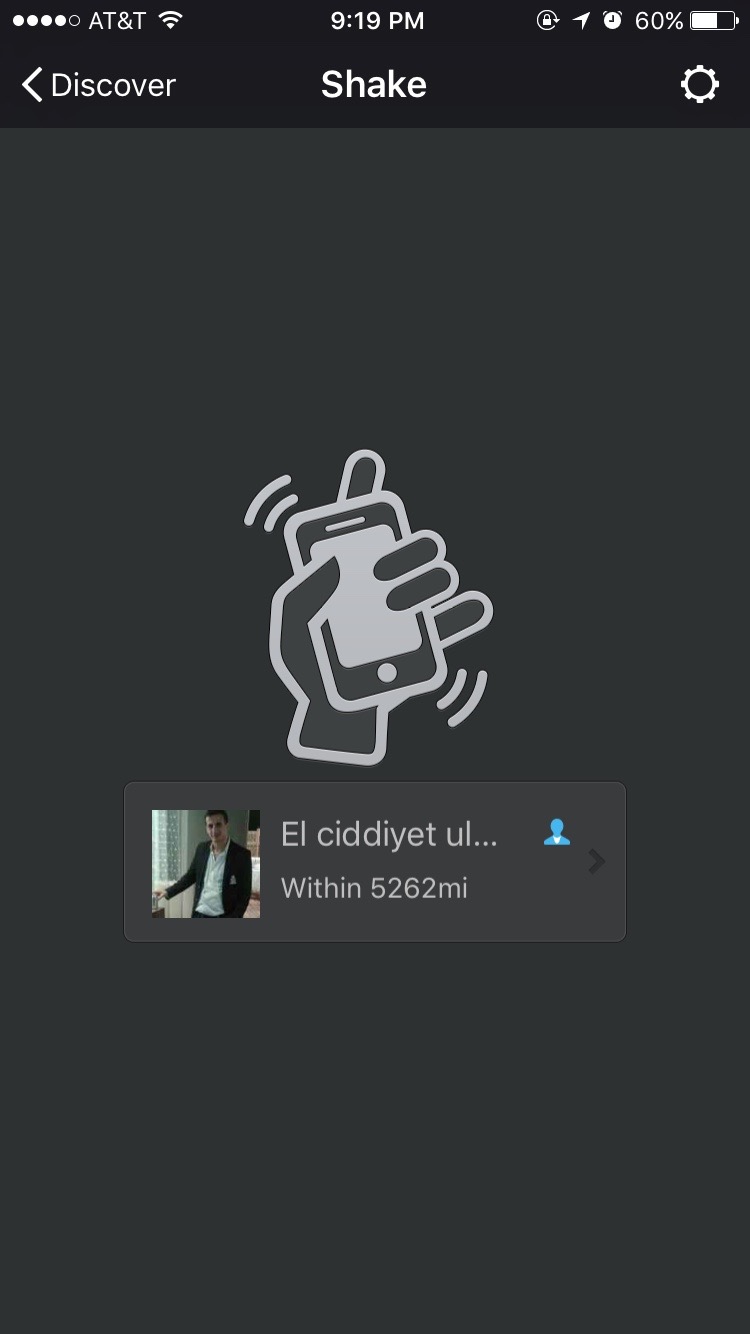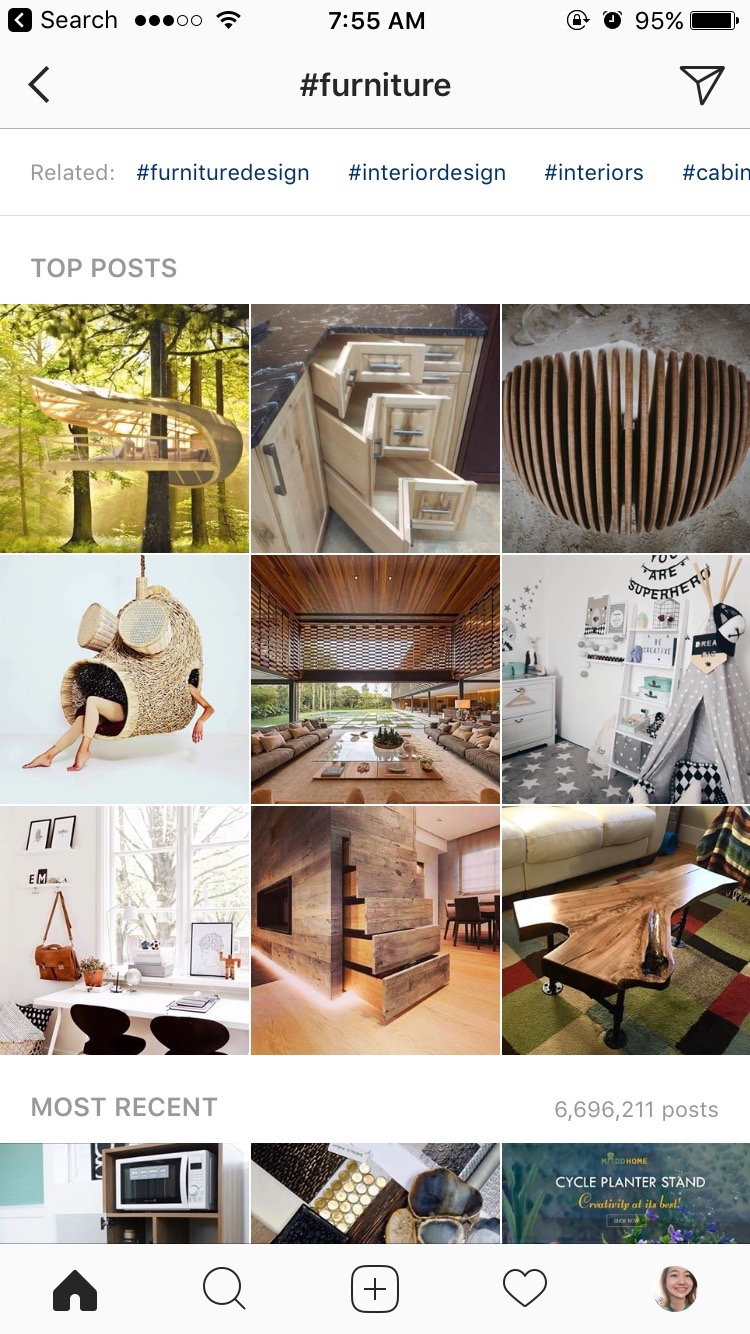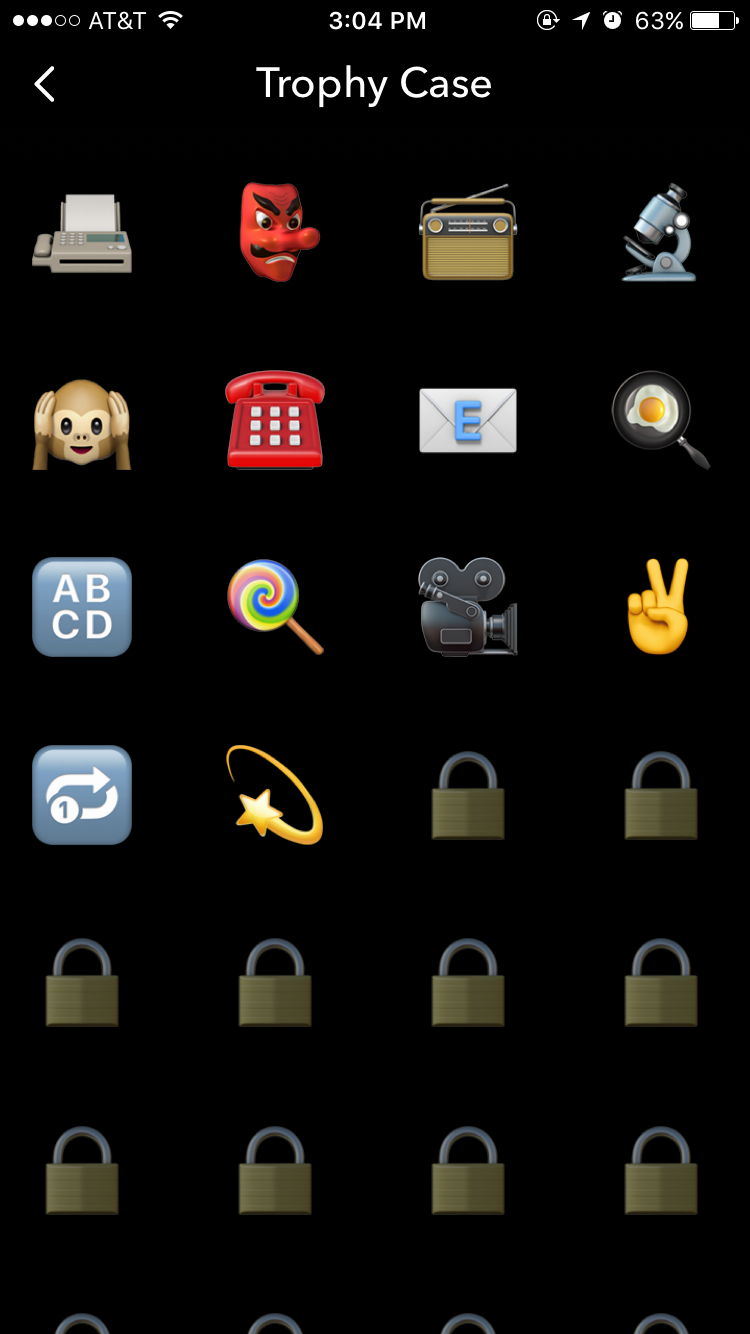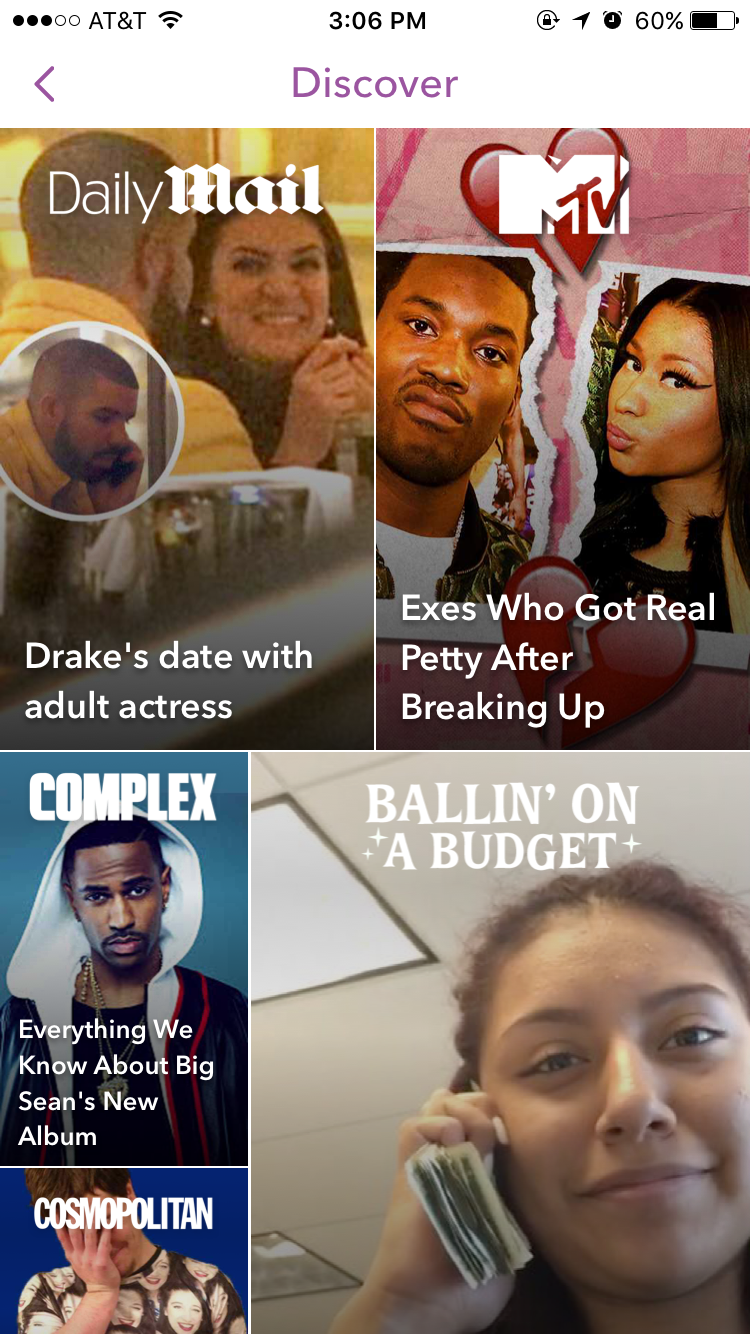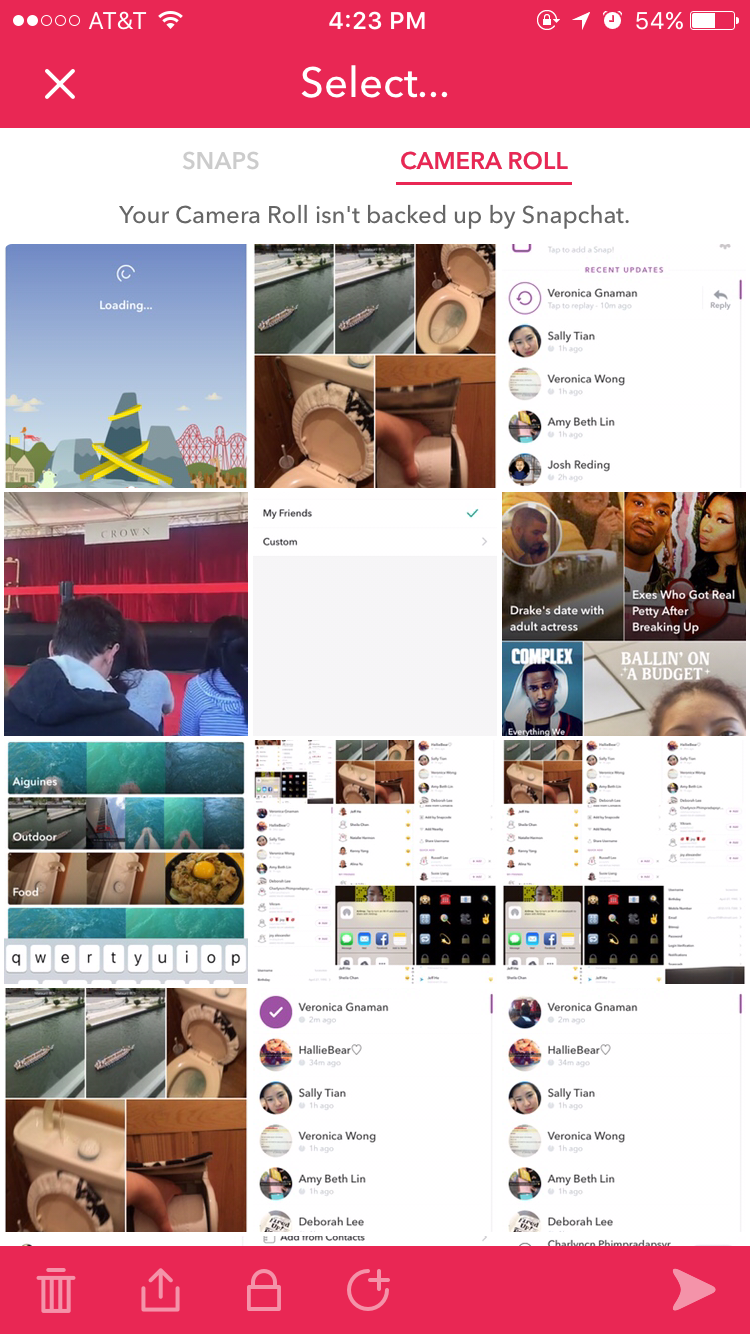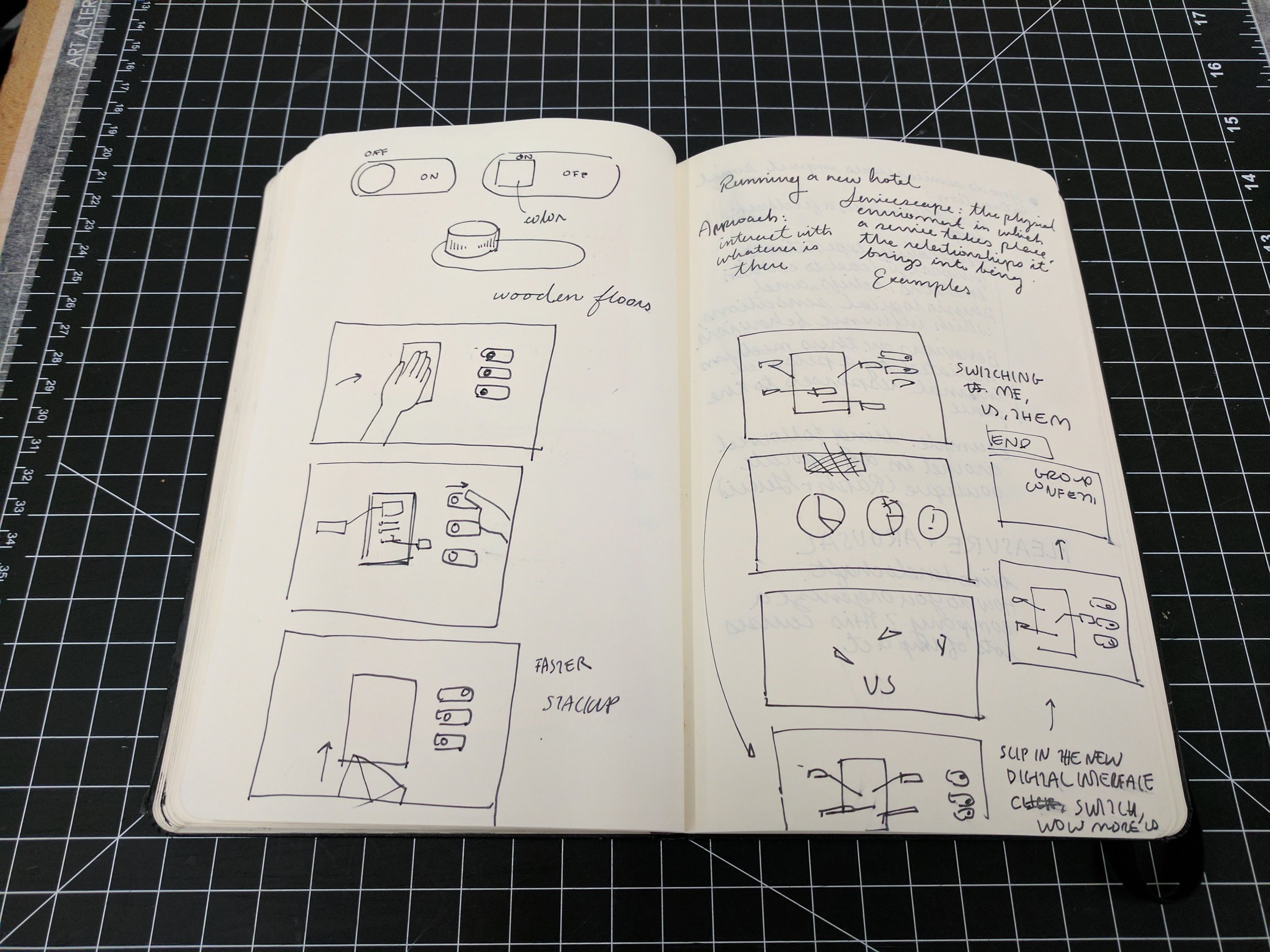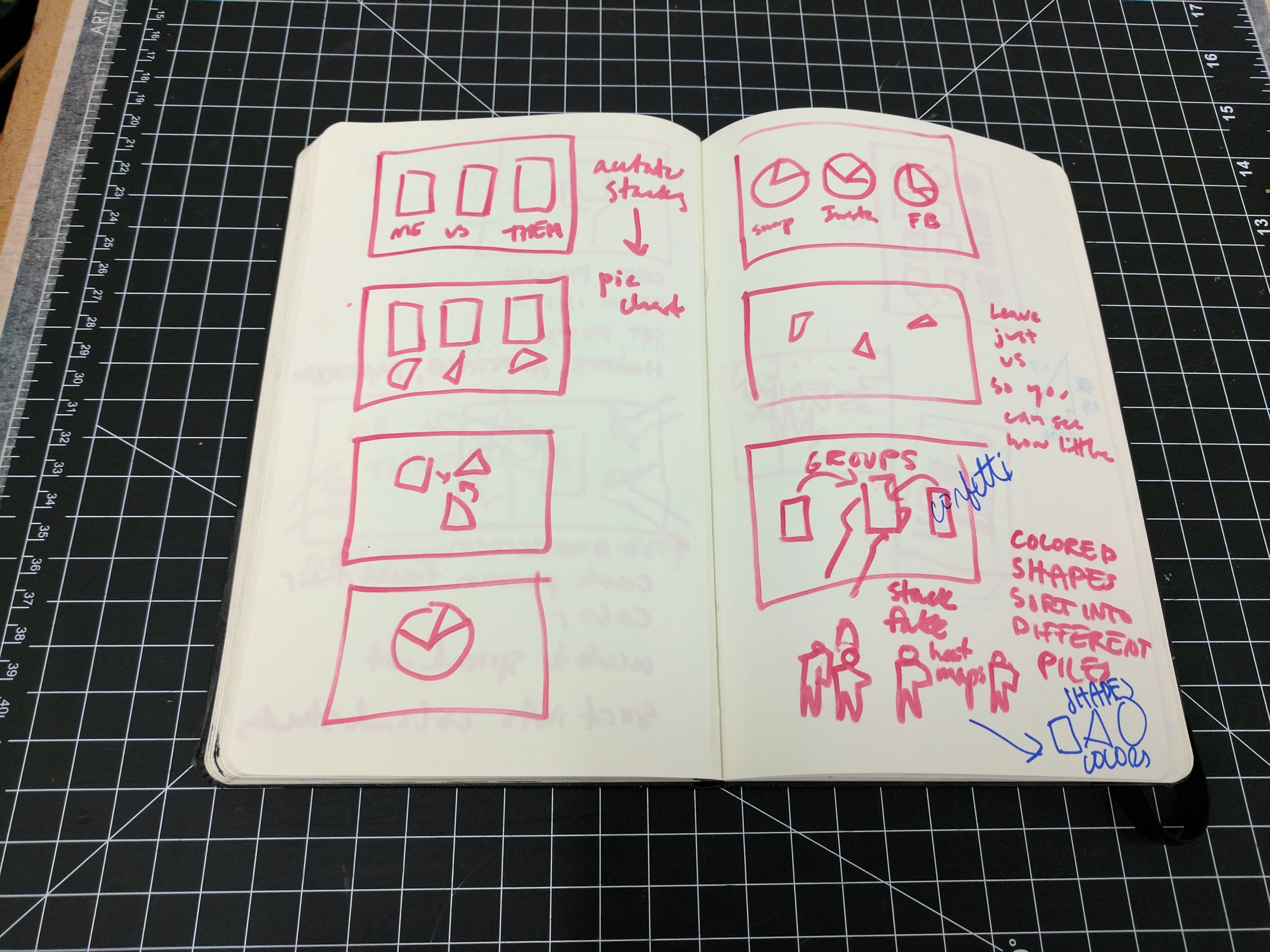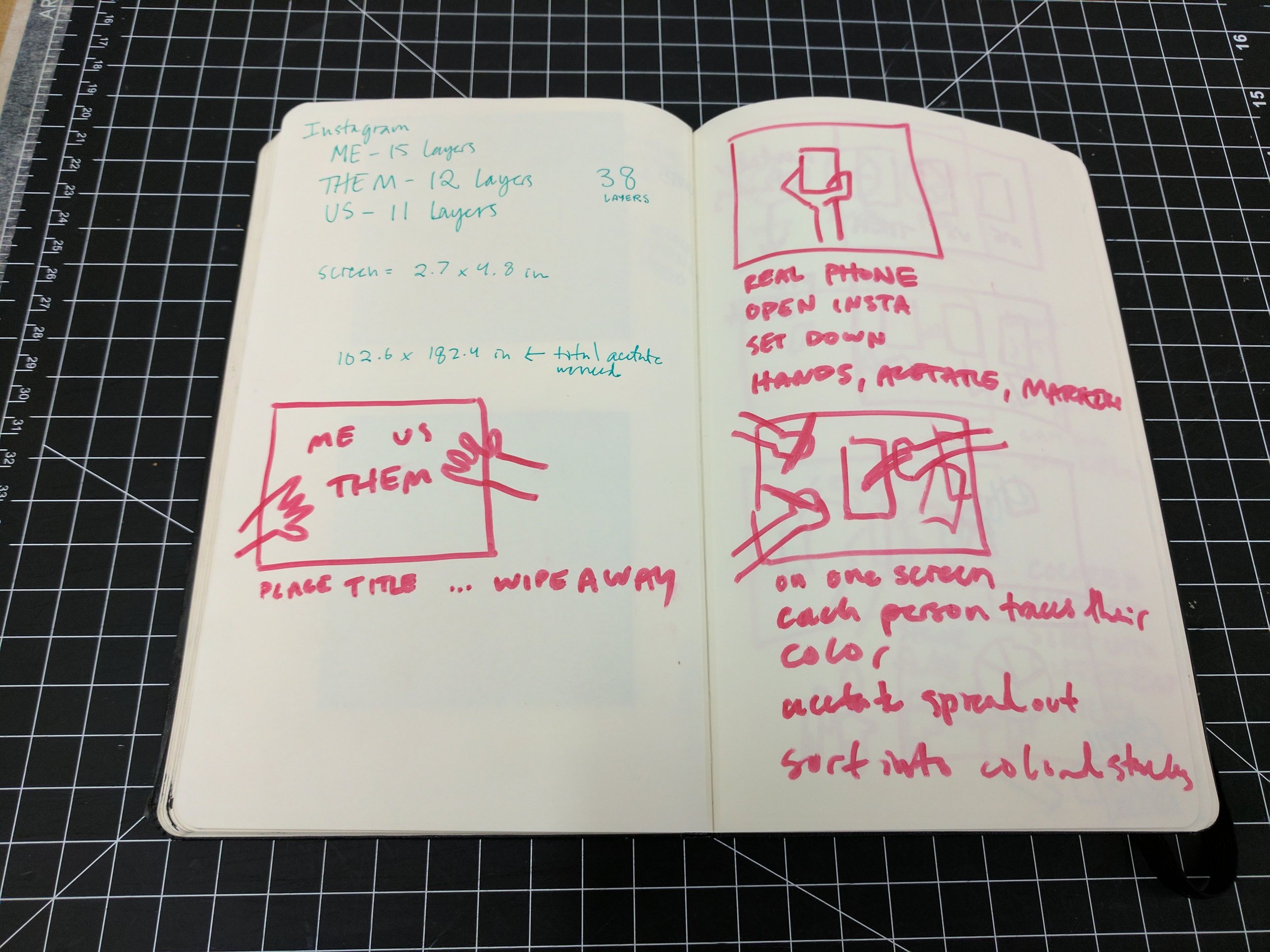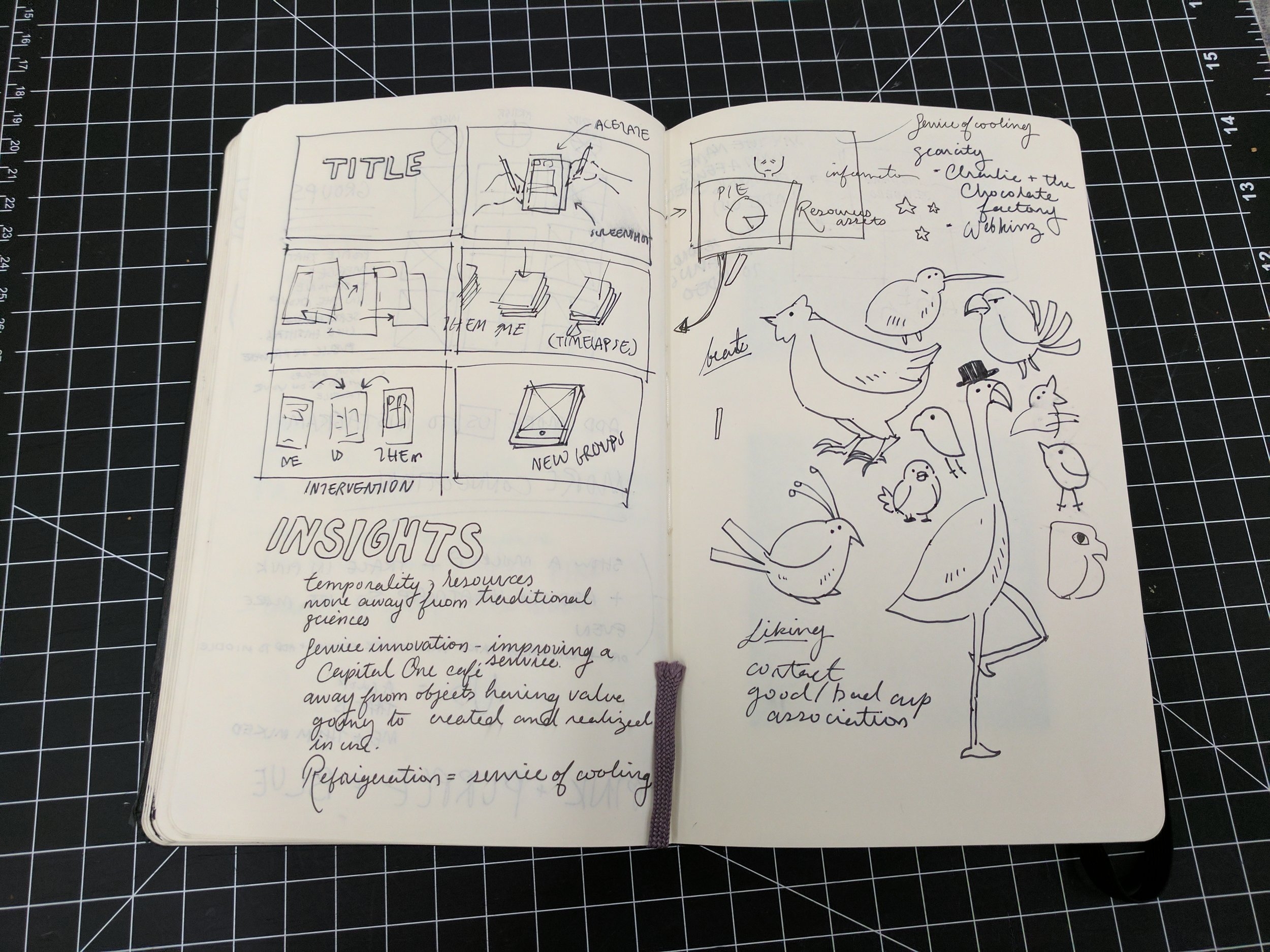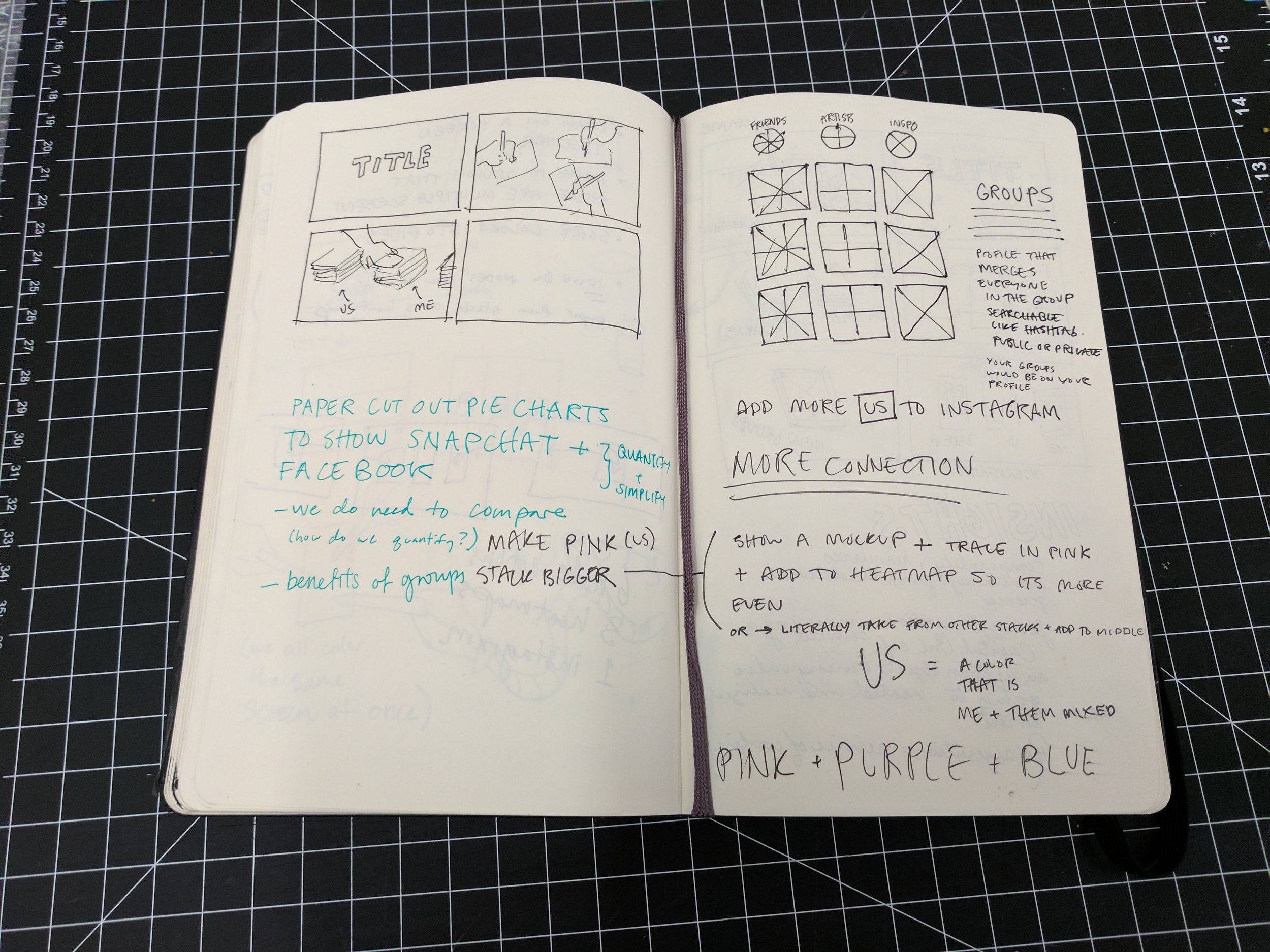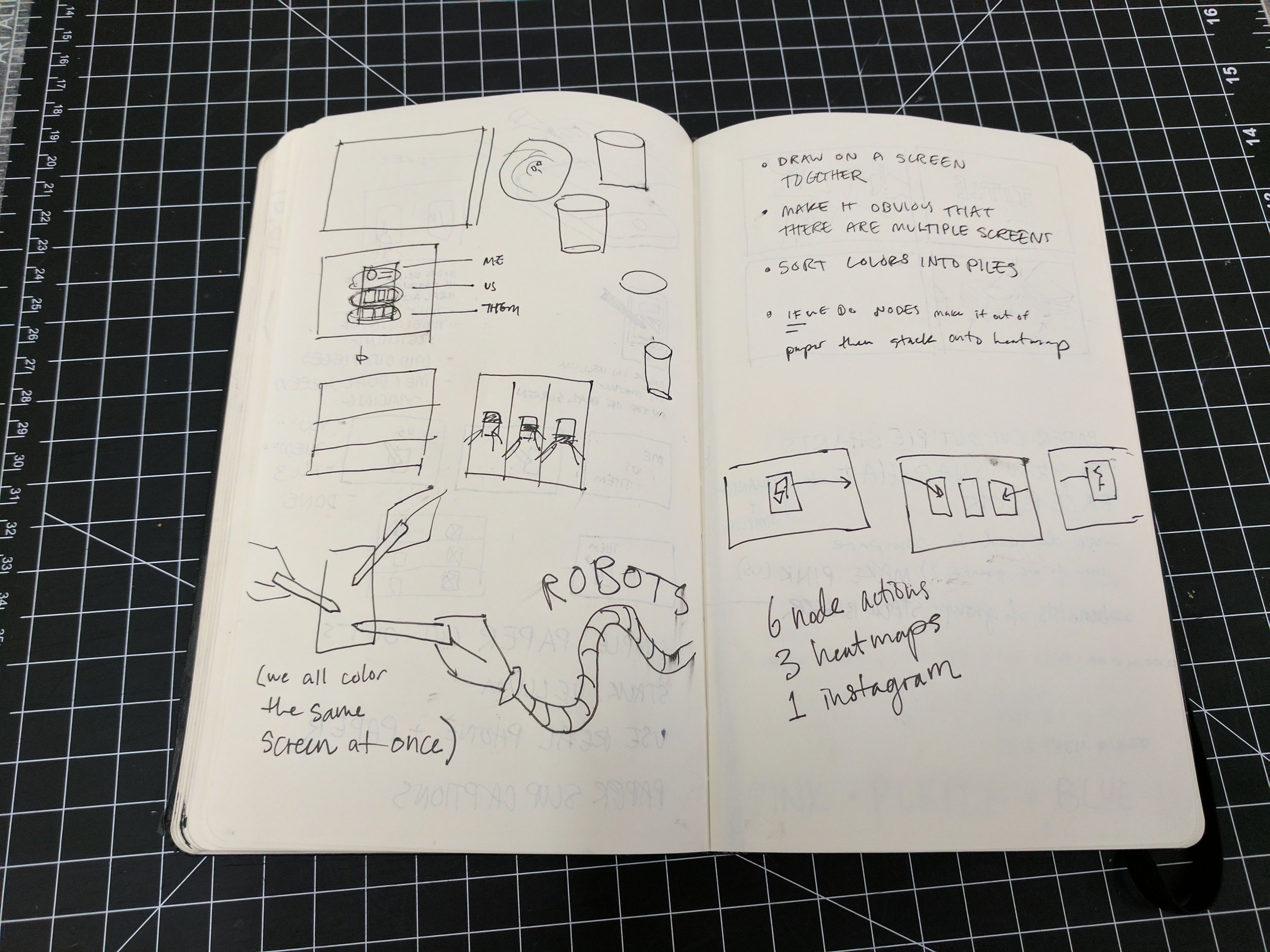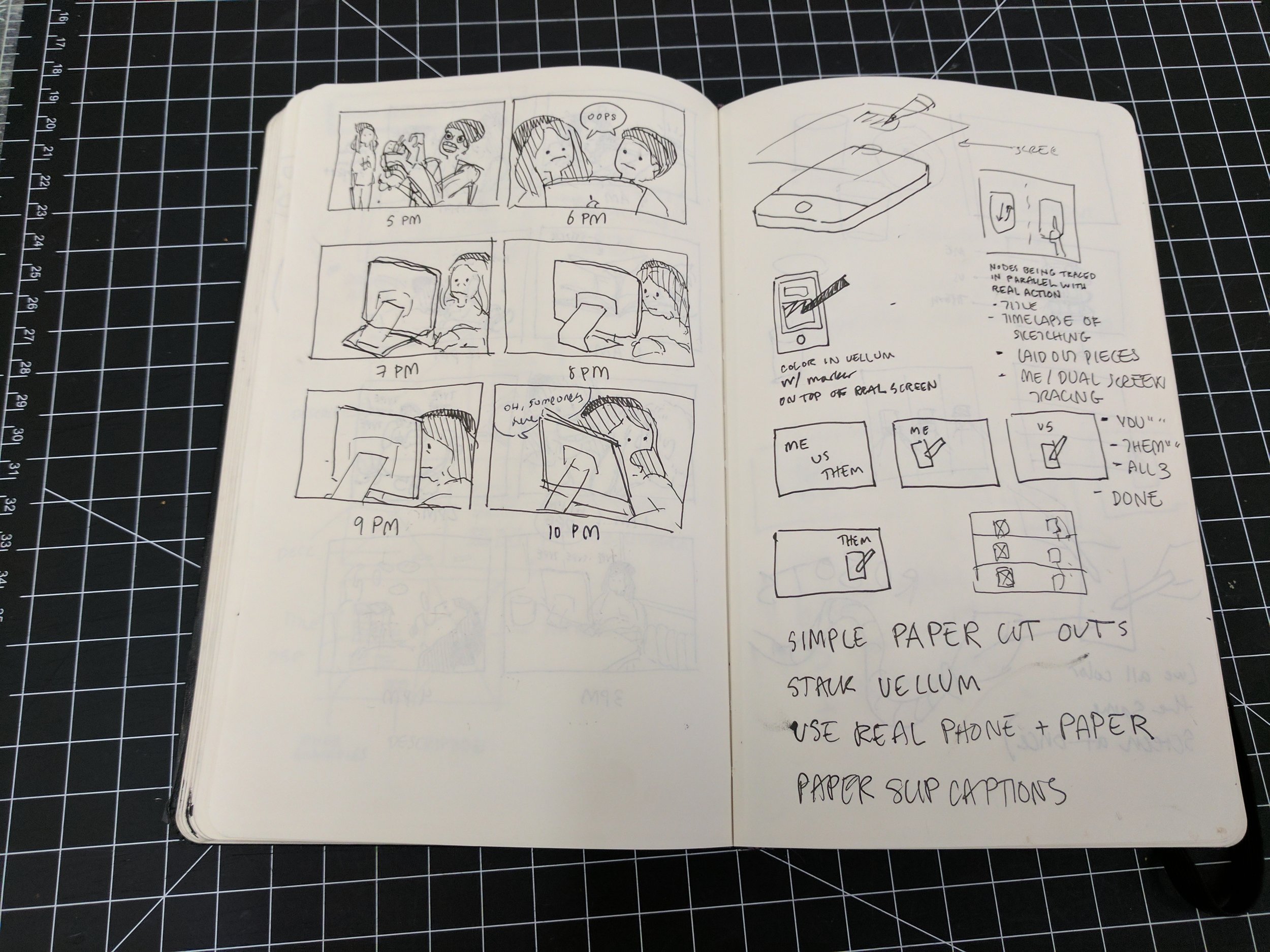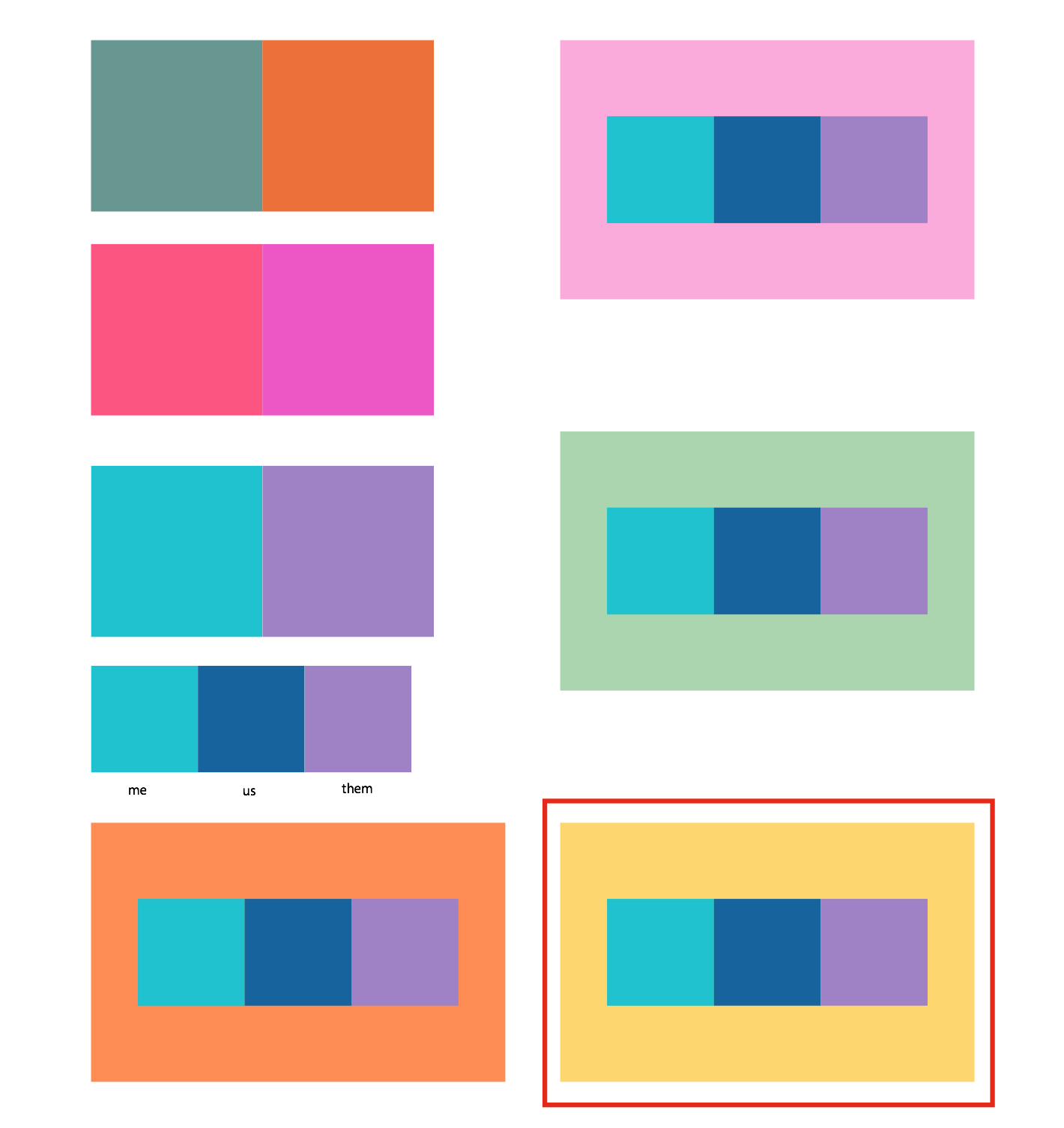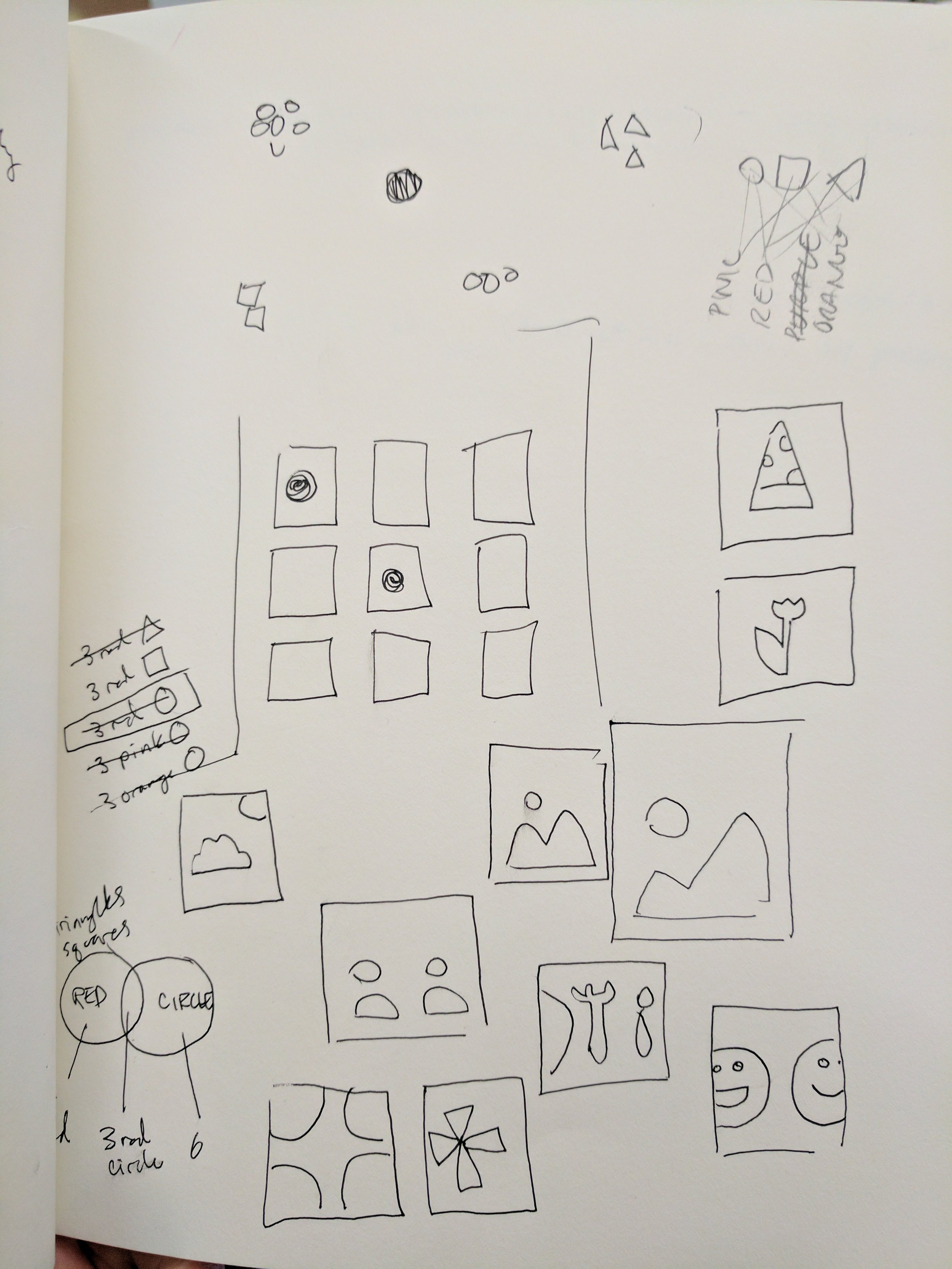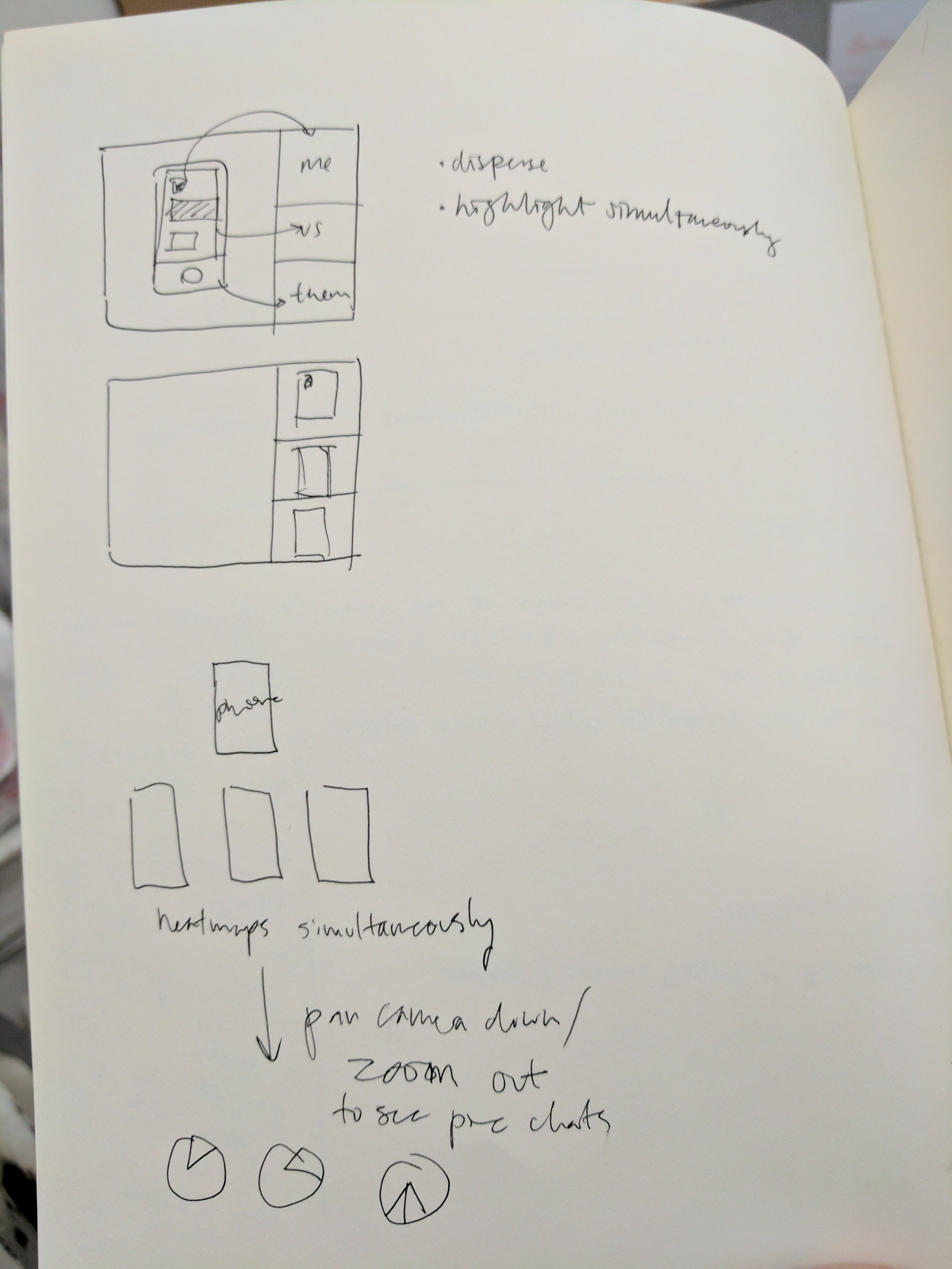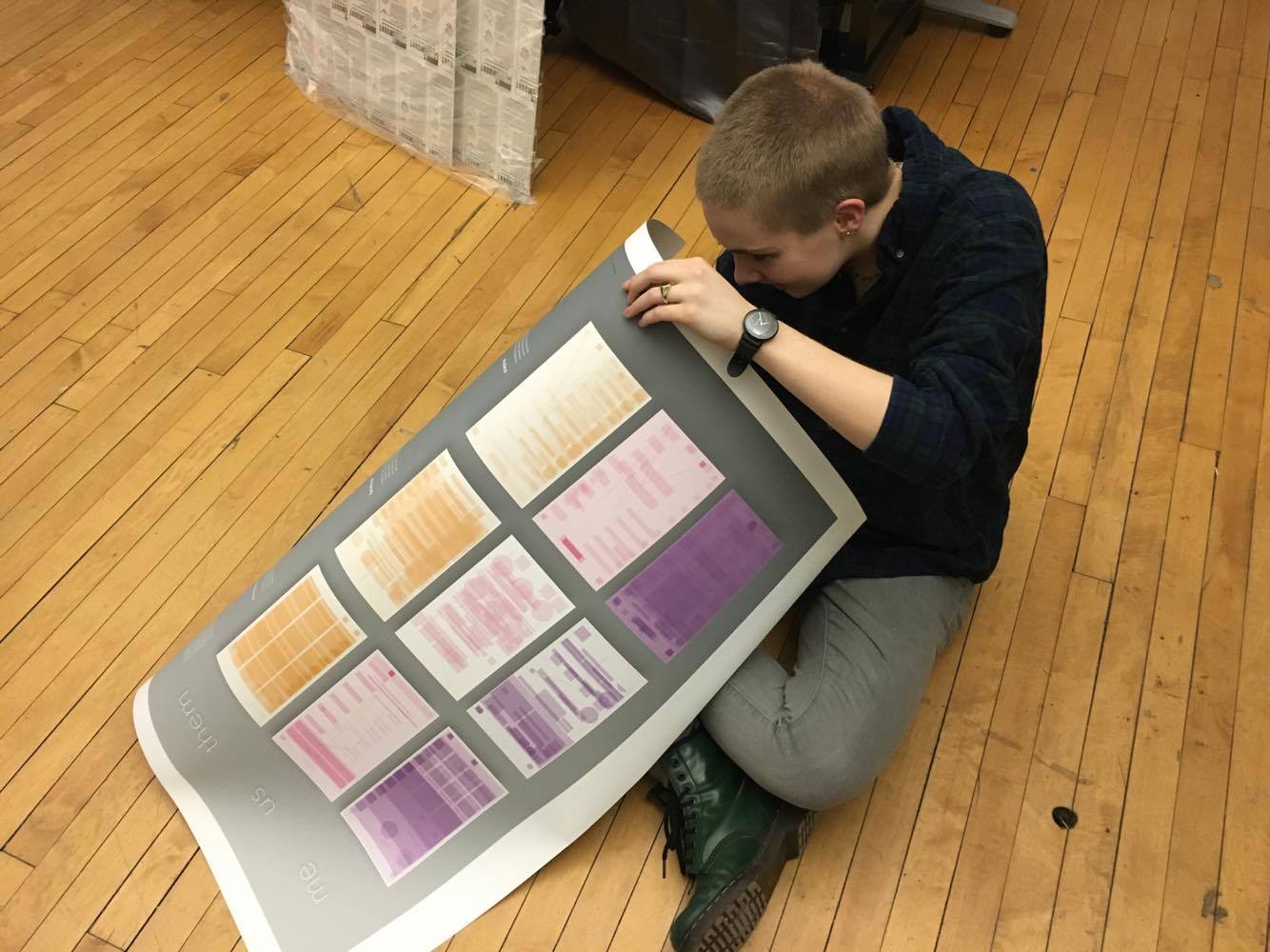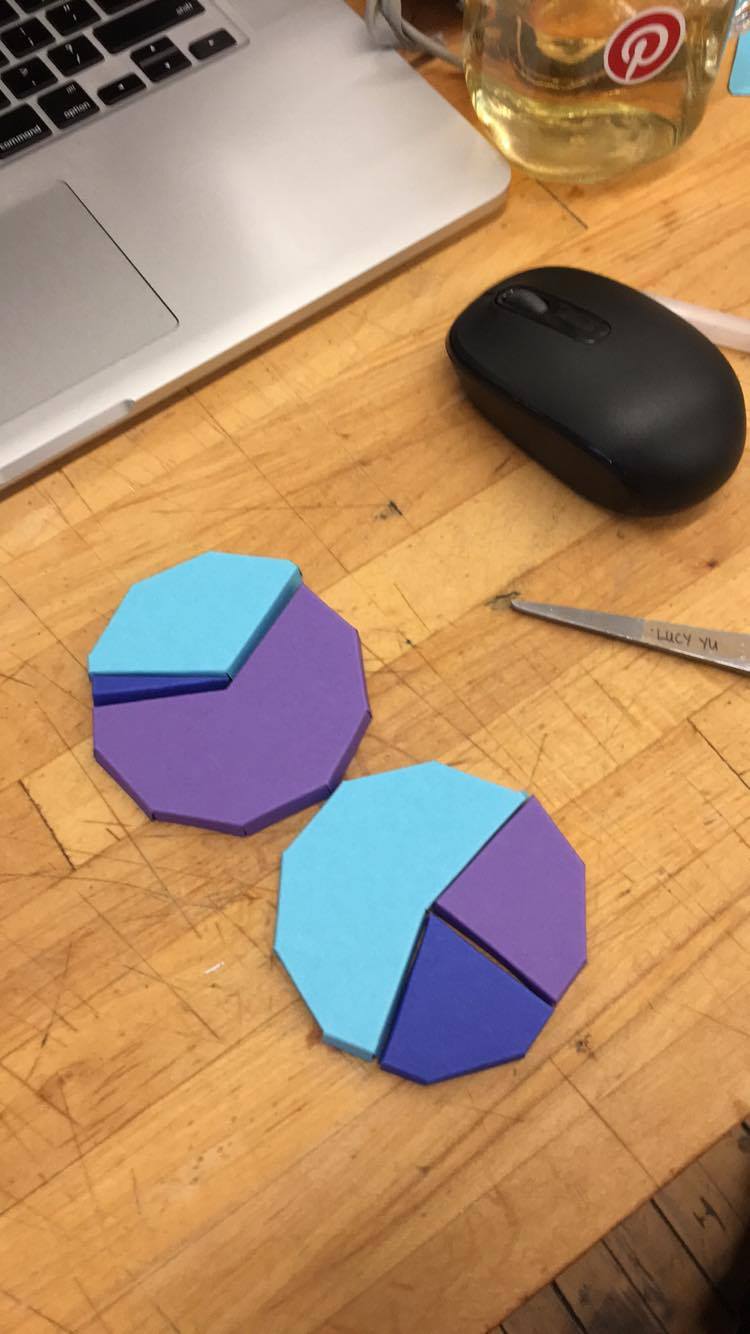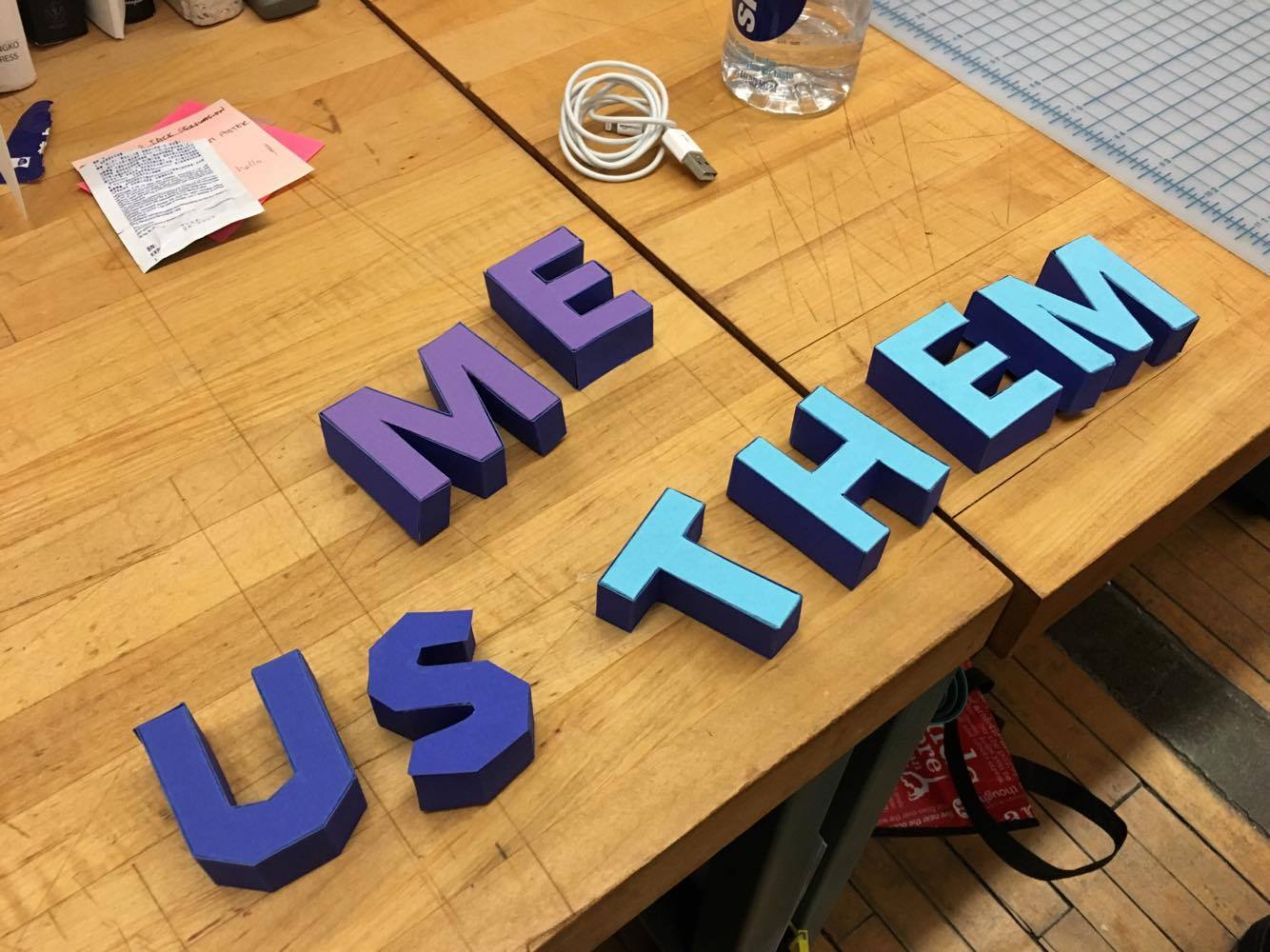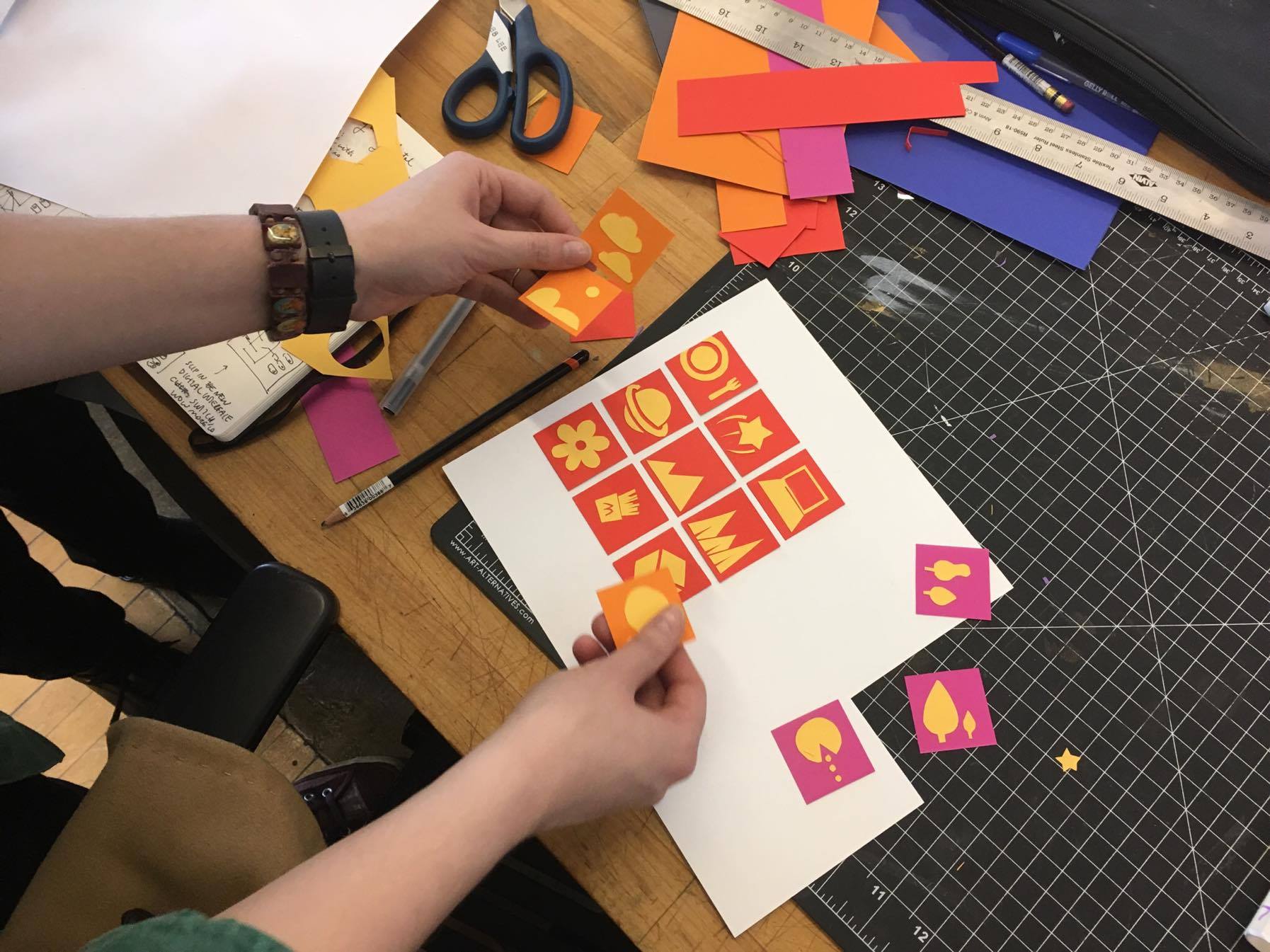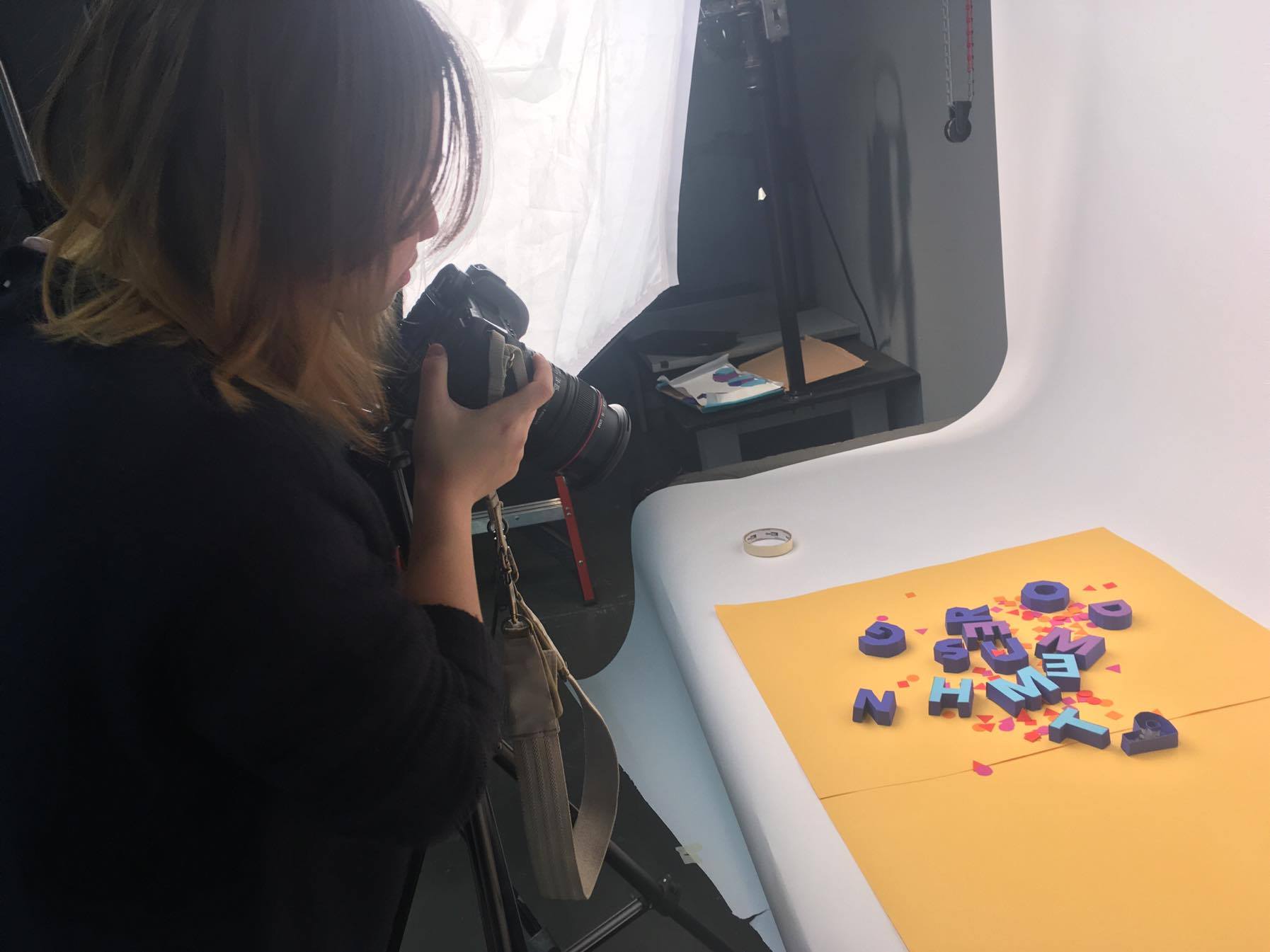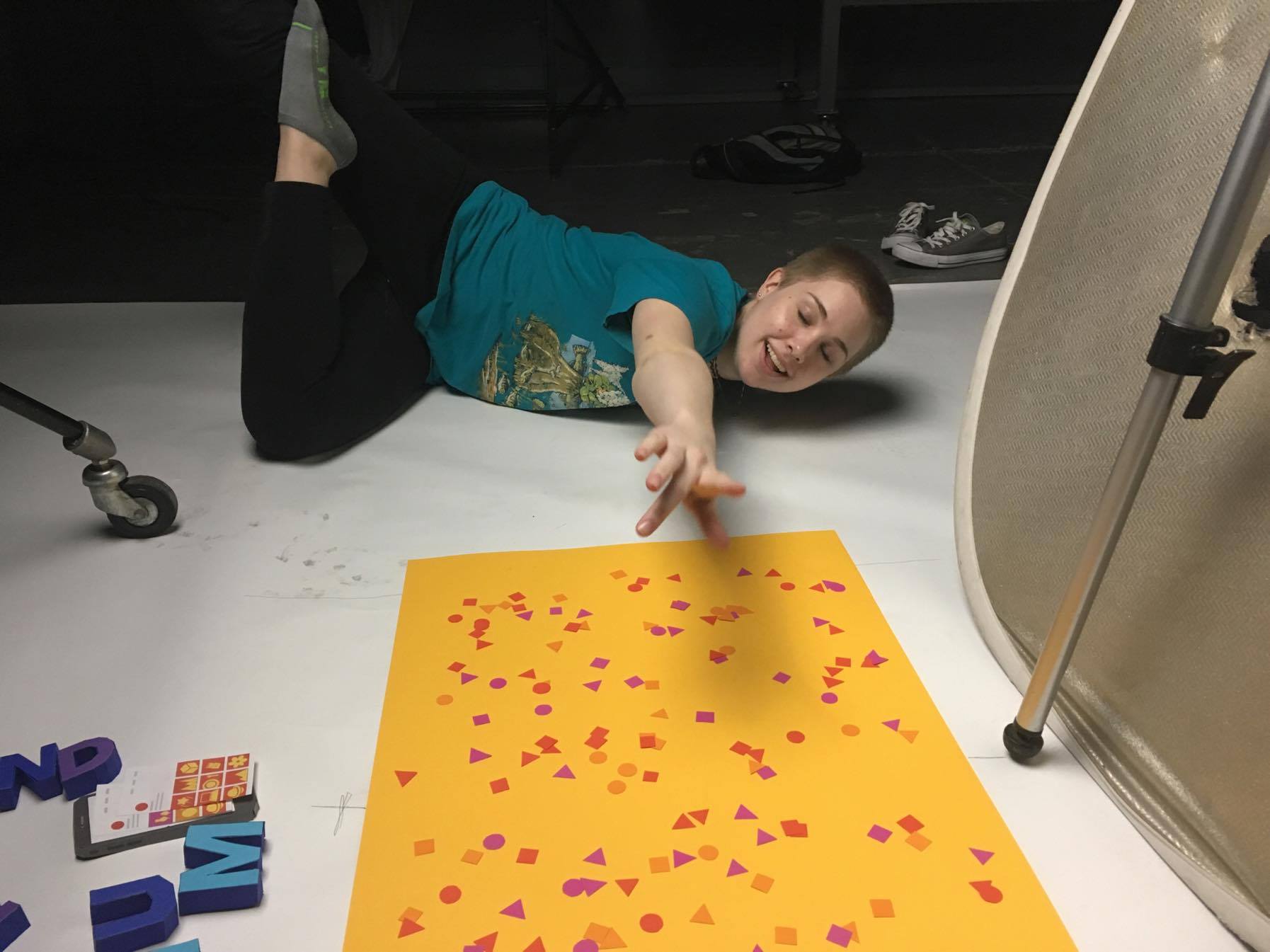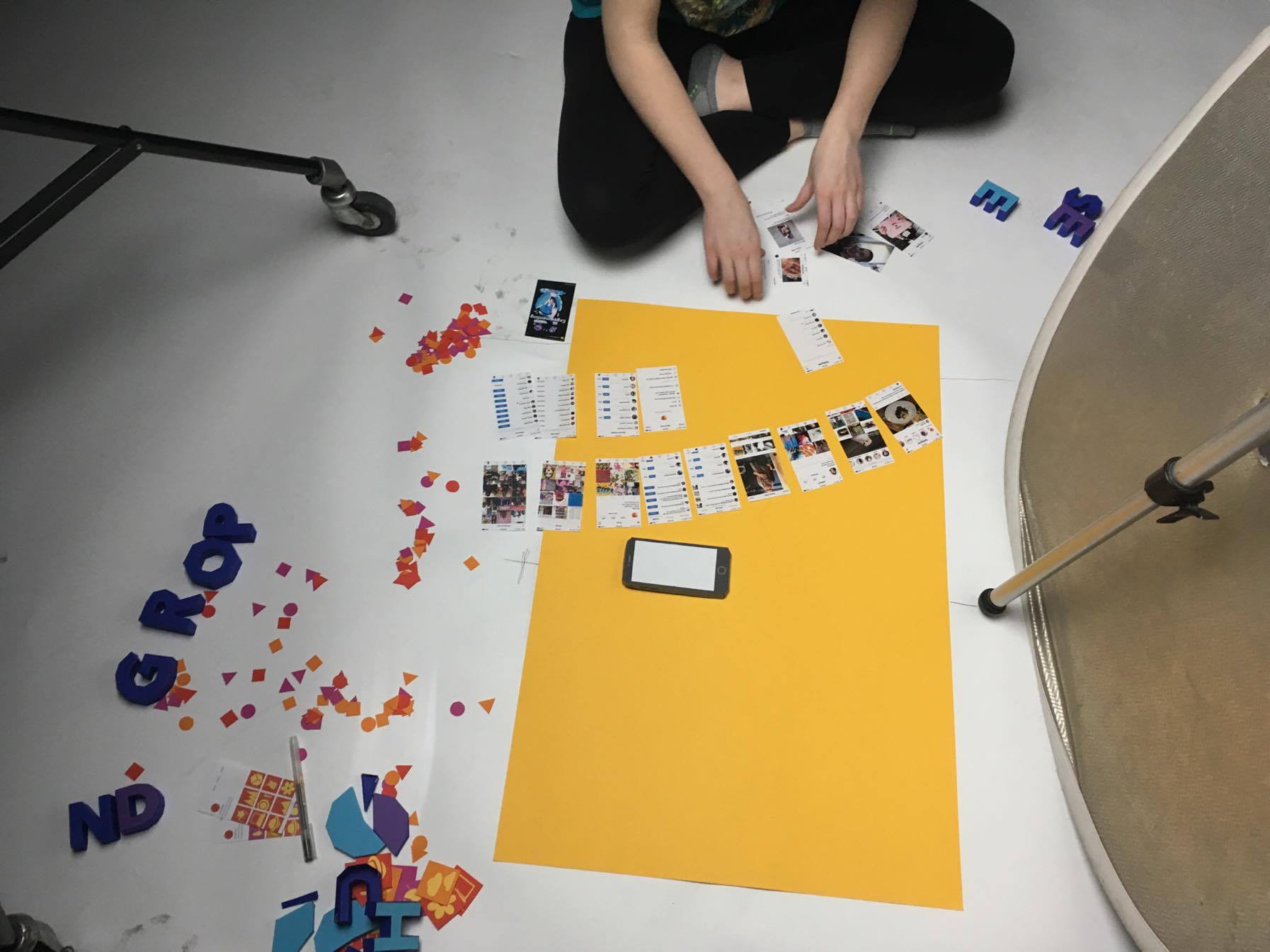Me, Us, Them
— Winner of the 2017 Design Excellence Award at AIGA PGH365 —
UX research · motion graphics · UI design
"How much of social media is actually social?"
Social media was conceived with the notion of improving the experience of connecting individuals and communities. It's gone a long way since its infancy, but has it since deviated from its original intention? Lily Fulop, Deborah Lee, and I set out to explore these ideas. The three of us worked on the film production together, where Lily and I were in responsible for the tangible components and Deborah was in charge of digital editing.
Video Key Frames:
PROCESS OVERVIEW
—
The three of us first made separate attempts to analyze the structure of Facebook, Snapchat, and Instagram, focusing on their use of digital real estate. However, we soon realized that there was a lack of consistency in the aspects we were each exploring. We soon shifted our approach and decided to dive deeper in the social aspect of these social media platforms.
To collect comparable quantitative data, we walked through the separate UX flows of Facebook, Snapchat, and Instagram, capturing screenshots of each step in the experiential sequence. We then categorized the content on each screen based on the call-to-action for the immediate user — whether it was for the user to create content (act), interact with another user (interact), or consume the content as a third-person viewer (spectate).
Color Categorization
—
(example from snapchat UI)
(example from instagram UI):
Heat Map
—
After collecting the UI screenshots and colour categorizing them, we created heat map composites for each category — namely categories we named "Me," "Us," and "Them" content. Shown below are the category composites for Instagram.
These heat map visualizations reveal the density of different locations on the digital real estate within each category. Interestingly, "Me" and "Them" content generally take up much more space than "Us" content.
Analyzing Uncategorized Spaces
+ Category Content
—
We proceeded to use a program (thank you Kaleb!) that enabled us to find the average percentage of content space is used on screen for each type of content.
Findings
—
After implementing the different analytical methods we considered applicable, we distilled that social media platforms have very little "Us" content in general:
Instagram
me: 40%
us: 8%
them percent: 52%
Facebook
me: 24.1%
us: 20.5%
them: 55.4%
Snapchat
me: 68%
us: 3.8%
them: 28%
All three social media platforms we analyzed have slim digital real estate exclusively carved out for "Us" content — their levels of interaction are very low for products that are meant for social interaction. Instagram and Snapchat have alarmingly low "Us" content; however, because Snapchat's function is by nature analogous to direct messaging through photos/videos the "Us" interaction is still naturally present.
This brings us to Instagram, which could use an increase in interactions to bring about a greater sense of community. Therefore, we decided to integrate a concept called "Instagram groups," where users can be grouped based on similar interest, family, or organizations. Group members can post directly to the groups, and view other content within the group published by other members.
VIDEO: STORYTELLING
—
We spent some time putting the storyboard together, making sure to take out redundant details not directly pertaining to the message. We wanted to give ourselves a 2-2:30 minute constraint to convey everything we want to present to the viewer. We also worked out what the logical sequencing of frames would be, thinking about what should come in where, which information should be presented with visuals and which with the narration. Since our team decided on a tangible visual style for our video, we also allocated a lot of time to physically craft our components (pie charts, letters, people confetti). It was a lot of fun, but an exhaustive process!
(Click here to see our full script and notes for audio recording.)
Crafting + Filming
—
POST-PROJECT REFLECTION
—
Challenges
This project taught me a lot about how to be an effective storyteller. Finding the right level of granularity within the set amount of time was a challenge, as we wanted to ensure touching on all the important points but also omitting unncessary details. It was very helpful for us to keep checking with people outside of our project to see whether the way we presented our approaches and findings made sense.
Lessons
I was very happy with the result of this project, and had a lot of fun with my teammates along the way. We had to switch gears a few times during our project because we went off tangent to the task of the project; however, were able to pick the pace back up very quickly. We had very great team dynamics, energy and attitude, and supported each other in times of struggle. I was very proud of how well we communicated with each other, epitomizing our skills as communication designers!
















